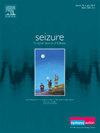头部计算机断层扫描(有对比剂和无对比剂)在局灶性和未知癫痫成像中的应用--一项前瞻性观察研究。
IF 2.7
3区 医学
Q2 CLINICAL NEUROLOGY
引用次数: 0
摘要
目的:检查癫痫时需要进行脑部成像。可供选择的成像方法包括核磁共振成像(MRI)和计算机断层扫描(CT),后者可以是非对比(NCCT)或对比增强(CECT)。具体的临床问题以及流行病学背景和社会经济环境中可能存在的癫痫基质对决定成像的选择非常重要。对于不太可能接受手术治疗的控制良好的局灶性或未知癫痫患者,CECT 是必要的,还是 NCCT 也是可以接受的选择?印度一家三级医疗中心开展了一项前瞻性观察研究。连续接受内科治疗且控制较好的局灶性或未知癫痫患者接受了 NCCT,随后接受了脑部 CECT。三名神经放射科医生独立报告图像。确定了在 NCCT 上漏诊和仅在 CECT 上发现的异常比例。此外,还分析了 CECT 发现的异常改变患者治疗方案的频率:219 名局灶性(87%)或不明原因(13%)癫痫患者接受了 NCCT 和脑部 CECT 检查。大多数患者的癫痫发作时间超过 3 个月,每年的发作频率为 2-10 次。3 位神经放射科医生在报告 NCCT 和 CECT 为 "正常 "或 "异常 "时,观察者之间的意见几乎完全一致,卡帕(κ)值分别为 0.9 和 1.0。与 CECT 相比,NCCT 检测异常的灵敏度为 97 %(CI 92.6 - 99.5 %),特异性为 99 %(CI 94.9 - 99.9 %)。NCCT和CECT发现异常的比例无明显差异(50.22% vs 51.14%,P = 0.91)。单发钙化肉芽肿是 NCCT 和 CECT 中最常见的异常,分别占 21.0% 和 19.1%。结论:在对局灶性或未知性癫痫进行造影检查时,如果发现异常,应立即就医:结论:在对局灶性或未知癫痫进行成像时,NCCT 的表现与 CECT 相当,尤其是在钙化病变造成重大病因负担的地区。成像在癫痫患者中的作用因人而异,对所有患者普遍推荐 MRI 或 CECT 既不符合成本效益,也无证据依据。对于药物反应性局灶性癫痫或病程较长的未知癫痫,CT 扫描要么正常,要么有钙化病灶,而这些病灶在 NCCT 上很容易被发现。本文章由计算机程序翻译,如有差异,请以英文原文为准。
Computed tomography of the head with and without contrast in imaging focal and unknown epilepsy – A prospective observational study
Purpose
Brain imaging is needed when investigating epilepsy. Imaging options available include MRI and CT scan which may be non-contrast (NCCT) or contrast-enhanced (CECT). The specific clinical question and probable epilepsy substrate in the epidemiological context and socioeconomic milieu are important in determining the choice of imaging. In patients with well-controlled focal or unknown epilepsy who are unlikely to be surgical candidates, is CECT essential or can NCCT be an acceptable choice?
Methods
A prospective observational study was conducted at a tertiary care centre in India. Consecutive patients with focal or unknown epilepsy who were relatively well-controlled on medical treatment underwent NCCT followed by CECT brain. Three neuroradiologists independently reported the images. Proportion of abnormalities missed on NCCT and picked only on CECT were determined. How often abnormalities picked on CECT changed patient management was also analysed.
Results
Two hundred and nineteen patients with focal (87 %) or unknown (13 %) epilepsy underwent NCCT followed by CECT brain. Most had epilepsy for >3 months and an annual seizure frequency of 2–10 seizures. There was a nearly perfect inter-observer agreement between 3 neuroradiologists in reporting the NCCT and CECT as 'normal' or 'abnormal' with kappa (κ) values of 0.9 and 1.0 respectively. The sensitivity of NCCT compared to CECT in detecting an abnormality was 97 % (CI 92.6 - 99.5 %) and the specificity was 99 % (CI 94.9 - 99.9 %). There was no significant difference in the proportion of NCCTs and CECTs found abnormal (50.22 % vs 51.14 %, p = 0.91). A solitary calcified granuloma was the most common abnormality reported on NCCT as well as CECT, 21.0 % and 19.1 % respectively. New findings picked on CECT alone, did not change management in any patient.
Conclusion
When imaging focal or unknown epilepsy, an NCCT performs as well as a CECT, especially in regions where calcified lesions contribute a significant etiological burden. The role of imaging in epilepsy varies between patients and a universal recommendation of an MRI or a CECT in all patients is neither cost-efficient nor evidence-based. In drug responsive focal or unknown epilepsy of longstanding duration, CT scans are either normal or have calcified lesions that are easily picked on NCCT.
求助全文
通过发布文献求助,成功后即可免费获取论文全文。
去求助
来源期刊

Seizure-European Journal of Epilepsy
医学-临床神经学
CiteScore
5.60
自引率
6.70%
发文量
231
审稿时长
34 days
期刊介绍:
Seizure - European Journal of Epilepsy is an international journal owned by Epilepsy Action (the largest member led epilepsy organisation in the UK). It provides a forum for papers on all topics related to epilepsy and seizure disorders.
 求助内容:
求助内容: 应助结果提醒方式:
应助结果提醒方式:


